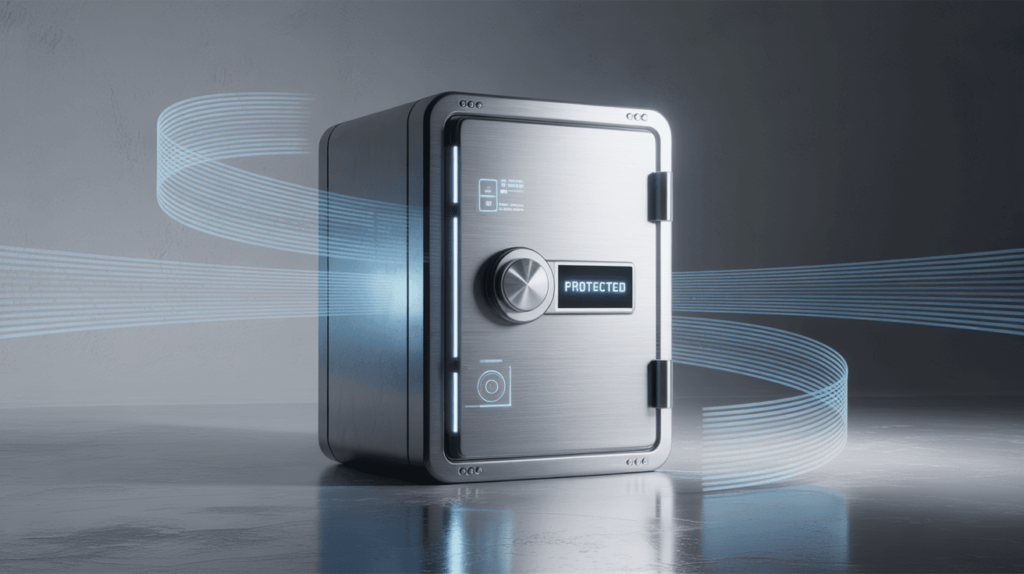As security threats evolve, so do the features of heavy safe boxes designed to protect your most valuable assets. In 2025, manufacturers integrate advanced materials, smart technologies, and environmental safeguards into these robust containers. Here’s what sets them apart…

1. Reinforced Armor Steel Construction
Modern heavy safe boxes use multi-layered armor steel, combining high-hardness outer plates with inner composite alloys to resist drilling, cutting, and impact. This hybrid structure disperses force across layers, preventing concentrated attacks. Users report that no-compromise steel grades maintain integrity even under industrial-grade cutting tools, making forced entry virtually impossible.
| Steel Layer | Function |
|---|---|
| Outer High-Hardness | Resists cutting and abrasion |
| Inner Alloy Composite | Absorbs and disperses impact |
2. Advanced Fireboard and Thermal Liners
Beyond steel, heavy safes incorporate fireboard liners rated for 350 °F for up to 120 minutes. These liners—often ceramic-gypsum composites—undergo endothermic reactions that delay internal temperature rise. In 2025, some safes boast dual-liner systems that extend protection to two hours, giving users precious time to evacuate or retrieve critical records post-alarm.
3. Digital and Mechanical Hybrid Locking
Hybrid locks combine electronic keypads with mechanical relockers and override keys. The keypad supports multi-user codes and time-delay settings, while internal mechanical relockers engage if tampering is detected. A hidden mechanical keyway behind a fortified panel guarantees access if the electronics fail, offering both convenience and fail-safe reliability in any scenario.
4. Biometric Identity Verification
Fingerprint and palm-vein scanners built into the lock bezel allow instant, contactless access for enrolled users. These biometric sensors store multiple profiles, rejecting unauthorized attempts and logging every entry event. Some models in 2025 integrate multi-factor authentication—combining biometrics with PINs—for high-security applications.
| Biometric Mode | Security Level |
|---|---|
| Fingerprint Scanner | Medium-High |
| Palm-Vein Reader | High |
| Multi-Factor | Very High |
5. Smart Connectivity and Remote Alerts
Heavy safes now link to home or business networks via Wi-Fi or secure mesh, sending real-time tamper or environmental alerts to mobile apps. Geofencing can auto-lock the safe when the owner leaves premises, and remote unlock requests require approval via multi-factor verification—perfect for emergency access without compromising security.
6. Environmental Monitoring Suite
Integrated sensors track internal temperature, humidity, and smoke levels. If thresholds are exceeded, the safe triggers internal fans or dehumidifiers and sends immediate notifications. In 2025, AI-driven anomaly detection analyzes sensor data trends, predicting potential failures or environmental risks before damage occurs.
7. Time-Delay and Duress Features
Time-delay locks introduce programmable waiting periods—ranging from 30 seconds to 15 minutes—after code entry, deterring smash-and-grab attacks. Duress codes silently signal authorities while granting access to the user, providing covert distress alerts without alerting intruders.
| Time-Delay Option | Typical Delay |
|---|---|
| Standard | 30 seconds |
| Extended | Up to 15 minutes |
8. Modular Interior Customization
Adjustable shelves, drawer inserts, and foam-padded trays let users configure the safe for firearms, jewelry, documents, or electronics. Magnetic mounts speed reconfiguration, while internal weight sensors alert you if valuables are removed outside scheduled access times.
9. Quiet-Close and Controlled Lid Mechanisms
Hydraulic and magnetic dampers ensure the safe door closes silently and locks without jarring, preserving discretion in noise-sensitive environments. Controlled opening sequences prevent sudden lid falls, protecting both users and contents.
10. Enhanced Fire and Water Sealing
IPX6 splash resistance and waterproof gaskets guard against sprinkler systems and flooding. Drainage channels channel water away from critical liners. Combined with UL fire ratings, these safes offer dual-threat protection—rare in older models.
| Protection Type | Standard Rating |
|---|---|
| Fire Resistance | 120 min @ 350 °F |
| Water Resistance | IPX6 splash-proof |
11. Emergency Backup Power Solutions
Built-in rechargeable batteries maintain electronic features for days, while external 9V terminals allow emergency jump-starts. Solar trickle-charge panels on top surfaces ensure continuous readiness—even during prolonged outages.
12. Blockchain-Secured Audit Logs
Access events, environmental readings, and firmware updates record to a private blockchain ledger—immutable and decentralized. This tamperproof log offers forensic-grade traceability, essential for high-security corporate or government applications.
13. Integrated Surveillance and Camera Modules
Internal cameras capture images of each opening, storing footage locally and in the cloud. Motion-activated recording begins the moment the lock mechanism senses activity, providing visual evidence in case of unauthorized attempts.
| Camera Feature | Capacity |
|---|---|
| HD Image Capture | Still images on each access |
| Continuous Recording | Up to 24 hours internal storage |
14. Eco-Friendly Materials and Certifications
Manufacturers in 2025 use recycled steel, non-toxic fireboard compounds, and biodegradable packaging. Energy-star-rated electronics minimize standby power. Look for GreenGuard or EPEAT certifications to ensure sustainable production.
15. How to choose the right heavy safe box for your needs
Assess threat scenarios—burglary, fire, water—and prioritize must-have features: lock type, fire rating, connectivity, and interior layout. Compare specs using side-by-side tables, verify third-party certifications, and review user feedback. Measure installation space and anchoring options before purchase to ensure seamless integration.
FAQ
Q1: Are biometric locks reliable in 2025 models?
Yes; palm-vein and multi-point fingerprint scanners boast >99% accuracy in diverse conditions.
Q2: How long do backup batteries last?
Rechargeable packs maintain full functionality for 7–14 days without external power.
Q3: Can blockchain logs be accessed offline?
Local copies store recent events; syncing resumes when the safe reconnects to the network.
Q4: What fire rating should I choose?
Aim for 60–120 minutes at 350 °F internal threshold, certified by UL 72 or ETL.
Q5: Do surveillance modules require subscription services?
Basic local storage is free; cloud backups may require optional subscription plans.



